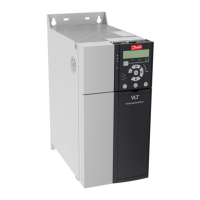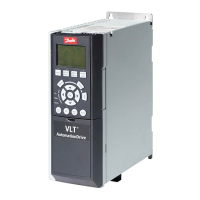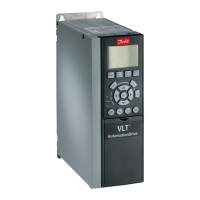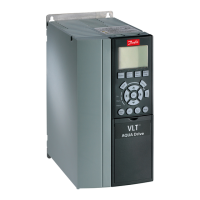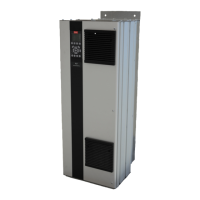individually. No responses are returned to broadcast
queries from the master. The Modbus RTU protocol
establishes the format for the master query by placing into
it the device (or broadcast) address, a function code
dening the requested action, any data to send, and an
error-checking eld. The slave response message is also
constructed using Modbus protocol. It contains elds
conrming the action taken, any data to return, and an
error-checking eld. If an error occurs in receipt of the
message, or if the slave is unable to perform the requested
action, the slave constructs an error message, which it
sends in response, or a timeout occurs.
11.7.4 Drive with Modbus RTU
The drive communicates in Modbus RTU format over the
built-in RS485 interface. Modbus RTU provides access to
the control word and bus reference of the drive.
The control word allows the Modbus master to control
several important functions of the drive:
•
Start.
•
Stop of the drive in various ways:
Coast stop.
Quick stop.
DC brake stop.
Normal (ramp) stop.
•
Reset after a fault trip.
•
Run at various preset speeds.
•
Run in reverse.
•
Change the active set-up.
•
Control the built-in relay of the drive.
The bus reference is commonly used for speed control. It is
also possible to access the parameters, read their values,
and, where possible, write values to them, allowing a
range of control options, including controlling the setpoint
of the drive when its internal PI controller is used.
11.7.5 Drive with Modbus RTU
To enable Modbus RTU on the drive, set the following
parameters:
Parameter Setting
Parameter 8-30 Protocol Modbus RTU
Parameter 8-31 Address 1–247
Parameter 8-32 Baud Rate 2400–115200
Parameter 8-33 Parity /
Stop Bits
Even parity, 1 stop bit (default)
11.7.6 Drive with Modbus RTU
The controllers are set up to communicate on the Modbus
network using RTU mode, with each byte in a message
containing 2 4-bit hexadecimal characters. The format for
each byte is shown in Table 11.10.
Start
bit
Data byte Stop/
parity
Stop
Table 11.10 Example Format
Coding system 8-bit binary, hexadecimal 0–9, A–F. 2
hexadecimal characters contained in each 8-
bit eld of the message.
Bits per byte 1 start bit.
8 data bits, least signicant bit sent rst.
1 bit for even/odd parity; no bit for no
parity.
1 stop bit if parity is used; 2 bits if no
parity.
Error check eld CRC (cyclical redundancy check)
Table 11.11 Bit Detail
11.8
RS485: Modbus RTU Telegram
Structure
11.8.1 Modbus RTU Telegram Structure
The transmitting device places a Modbus RTU message
into a frame with a known beginning and ending point.
Receiving devices are able to begin at the start of the
message, read the address portion, determine which
device is addressed (or all devices, if the message is
broadcast), and to recognize when the message is
completed. Partial messages are detected and errors set as
a result. Characters for transmission must be in
hexadecimal 00–FF format in each eld. The drive contin-
uously monitors the network bus, also during silent
intervals. When the 1
st
eld (the address eld) is received,
each drive or device decodes it to determine which device
is being addressed. Modbus RTU messages addressed to 0
are broadcast messages. No response is allowed for
broadcast messages. A typical message frame is shown in
Table 11.12.
Start Address Function Data CRC
check
End
T1-T2-T3-
T4
8 bits 8 bits N x 8 bits 16 bits T1-T2-T3-
T4
Table 11.12 Typical Modbus RTU Telegram Structure
Appendix VLT® AutomationDrive FC 361
84 Danfoss A/S © 03/2019 All rights reserved. MG06K102
1111
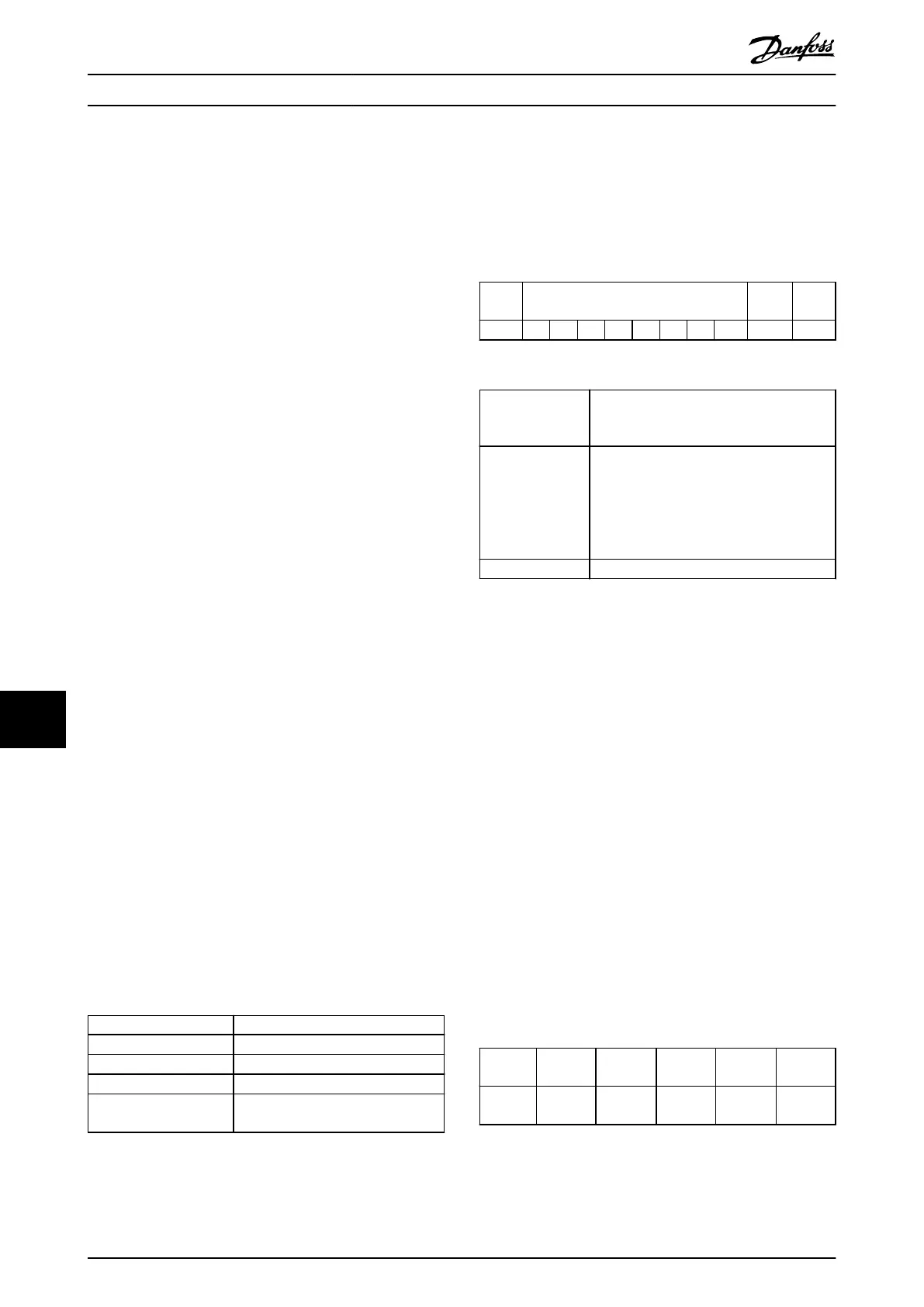